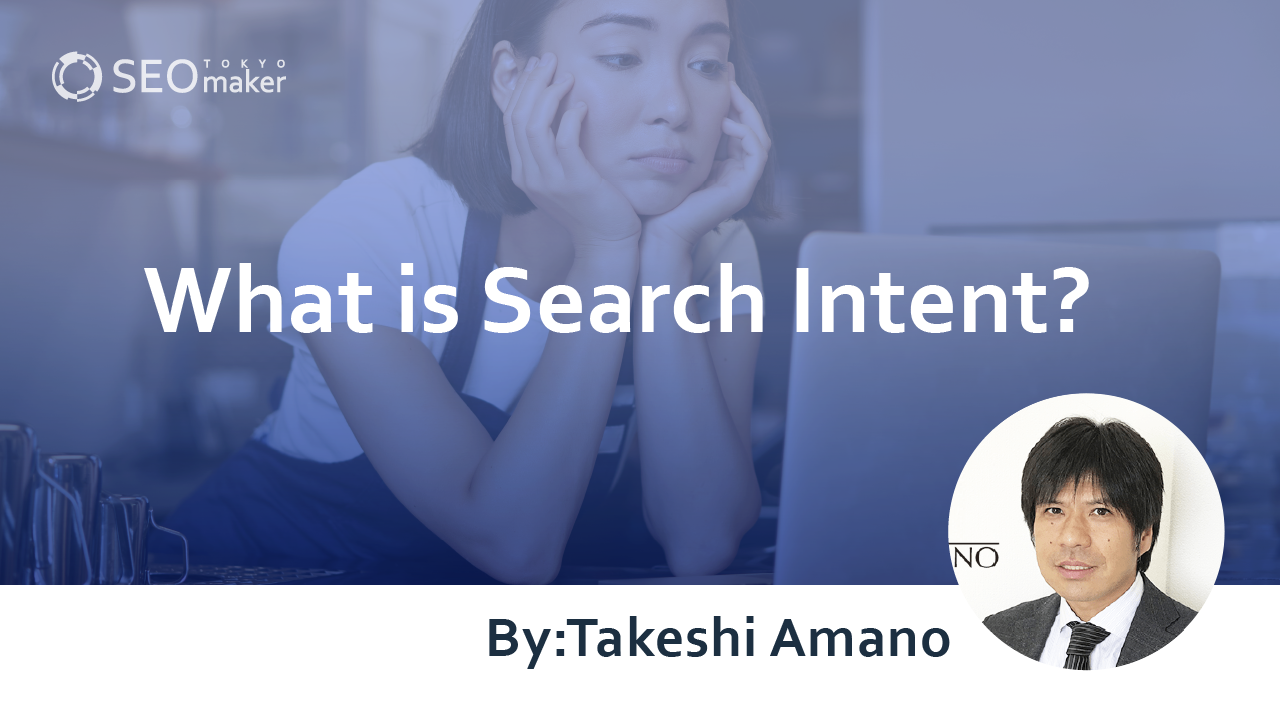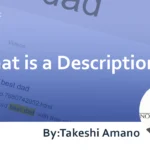What is Search Intent? The Importance of Search Intent in SEO: From Research to Application
contents

Understanding search intent is crucial when creating SEO-focused web pages. Many understand the term at a basic level, but details can often be elusive.
Even when outsourcing article creation, it’s rare to find writers who grasp and incorporate search intent beyond a superficial level. However, incorporating search intent into your web pages is a necessity for effective SEO writing.
SEO consultant Tokyo SEO Maker will explain search intent. Beginners should also check out ” What is SEO Writing? Tips and Tricks for SEO-minded Writing .”
Related Articles on Search Intent
-What are SEO Keywords?
-What is Content SEO?
-What is Search Volume?
-What is a Search Query?
-What is SEO Writing?
-What is Content Marketing?
What is Search Intent?
Search intent, also known as intent, is the purpose behind a user’s search on search engines.
It involves understanding the search needs of users and providing the answers they seek, which is a fundamental role for any website or page. Therefore, it’s essential to understand the user’s search intent related to keywords when creating a website or page.
The Importance and Considerations of Search Intent
The importance and consideration regarding search intent are as follows:
The Importance of Search Intent
The importance of search intent is that pages that meet users’ needs are valued highly by both site visitors and Google’s search engine.
Conversely, pages that fail to provide the information users are seeking may be deemed of little value by Google and considered unworthy of inclusion in search results.
Considerations in Search Intent
Articles that take search intent into account tend to be rated more highly. However, not all web pages consider this.
A common issue is the discrepancy between the information creators want to write and what readers are looking for.
Typically, a writer is responsible for content creation, but individual differences can lead to variations. Some writers may prioritize what they want to write over the reader’s needs.
In such cases, it’s crucial for web directors to take note. To prevent these issues, web directors could outline the major structure of the page and have writers fill in the sections based on provided headings.
Approaching Search Intent
When considering search intent, it’s important to anticipate the target audience and the context for the keywords.
For example, if someone searches for “saury” on a search engine, various intents could be associated with this search, such as;
-Wanting to know about the entertainer Akashiya Sanma,
-Looking to watch Akashiya Sanma’s variety shows,
-Seeking entertainment news about Akashiya Sanma
-Wanting to buy Sanma cheaply
-Wanting to know cooking recipes for Sanma
-Wanting to find restaurants that serve Sanma in the neighborhood
This is just one example of search intent, but even from this alone, you can see that the information sought is completely different. Furthermore, if you were to create a web page to provide information to users, the content you need to convey within the page would significantly change.
Needs and Wants in Search Intent
When identifying search intent, consider two concepts: needs and wants. Needs refer to the issues or objectives that a user has. Wants are the specific means by which these needs are addressed.
For example, there is the following needs.
Needs: Desire to eat saury.
A consumer thought, “I want to eat saury,” but there isn’t just one way to eat saury. At this stage, the consumer considers different methods to eat saury and thinks of using search to find information. Simultaneously, the following wants arise:
Want 1: I want to know a recipe for saury (to cook and eat saury at home).
Want 2: I want to go to a restaurant that serves saury (to eat saury out).
By understanding both needs and wants, it becomes possible to deeply comprehend the context behind a user’s keyword search.
Types of Search Intents
Users always have a purpose when they use search engines. Their intent can be categorized based on whether they want to know something, go somewhere, do something, or buy something.
These intents translate into four types of search queries.
-KNOW Queries (Want to know
-GO Queries (Want to go)
-DO Queries (Want to do)
-BUY Queries (Want to buy)
By tailoring web pages to these search intents, you can effectively meet users’ needs.
KNOW query (want to know)
A KNOW query refers to words entered when someone wants to know about a specific matter. Examples of KNOW queries include:
-“Sanma personality”
-“Saury cooking methods”
GO Queries (Want to go)
GO queries refer to when a user wishes to visit a specific location. Examples of GO queries include searches like;
-” Soury restaurants in Tokyo”
-” Saturday set meals in Tokyo”
DO Queries (Want to do)
DO queries are used when a user intends to perform a specific action. Examples of DO queries include;
-“Sanma missed broadcast”
-“Sanma entertainment news”
BUY Queries (Want to buy)
BUY queries are utilized when a user wants to purchase a specific item. Examples of BUY queries are;
-“Sanma online shopping”
-“Sanma discount sales”
Researching Search Intent
Research search intent requires a variety of investigative methods, which include;
-Research suggested keywords
-Investigate related keywords
-Visualize co-occurring words
-Refer to FAQ sites and social media
-Consult the top-ranking pages in search results
Exploring Suggested Keywords
Suggested keywords are automatically generated by search engines as you type in the search box. These suggestions are based on previously searched terms combined with your main keyword, helping you understand what users are likely searching for.
Examining Related Keywords
Related keywords appear at the bottom of the search results page when you search a keyword on Google.
The frequency of these keywords can help infer the search intent.
Imagining Collocations
Collocations are words commonly associated with a specific word. For example, hearing “spaghetti” might prompt words like;
– “pasta”
-“Italian”
-“sauce”
-“fork”
These associations depend on personal experience and may vary from person to person. On the other hand, words that can be co-occurring terms are not always picked up as suggested or related keywords.
In such cases, these could represent needs that the Google search engine has not yet recognized, potentially serving as seeds for creating content with higher originality.
Using FAQ Sites and Social Networks
FAQ sites and social networks facilitate information exchange and interactions among users, providing a wealth of raw data on potential search intents.
FAQ sites, where users post questions and others respond, can be particularly revealing of the search intent behind specific keywords. For example, suppose the following question had been posted.
– “Can you recommend a good curry restaurant in Tokyo?”
From the content of this question, we have identified that there is a search intent of “wanting to go to a delicious curry restaurant” for the keyword “curry.”
Utilizing Top Search Result Pages to Understand Search Intent
When you perform a keyword search on Google, the pages that appear at the top of the search results are considered by Google to be most relevant to users’ search intents.
For instance, searching for “weather” typically brings up forecasts for the coming week, while searching for “corona” displays statistics and the latest news on the coronavirus.
By reviewing these results and pages, you can discern that search intents for keywords like “weather” and “corona” often involve a desire to know current conditions and near-future predictions.
Key Points in Understanding Search Intent
Understanding search intent involves several key aspects:
-Gain basic knowledge about the keyword
-Understand the characteristics of the target users
-Consider the 5W3H for the keyword
Gaining Fundamental Knowledge of Keywords
By acquiring a basic understanding of the targeted keywords, you deepen your comprehension of the search intents.
For example, if you are writing a guide for a video game. At this time, we set keywords like “Game Name (specific noun) Strategy.” However, the type of strategy information required varies depending on the game. Therefore, the page creator actually plays the game to acquire knowledge about it.
Then, it becomes clear that there is a high demand for strategy information on “stages that could not be cleared on the first attempt.”
Understanding the Attributes of Your Target Audience
Knowing the characteristics of your target audience can provide clues to their search intent.
For example, if the primary players of a game you are targeting are teenagers, it’s likely that many of them are students with limited budgets.
This insight can lead you to hypothesize that they are searching for ways to obtain in-game items for free.
Consider the 5W3H for the keyword
This approach, derived from the initials of six key words in business thinking, is helpful in clarifying the purpose of a search.
-When: When is it needed?
-Where: Where is it needed?
-Who: Who needs it?
-Why: Why is it needed?
-What: What is needed?
-How: How is it resolved?
Let’s apply the 5W3H to a case where “Ramen Recommended” is set as a keyword.
-When: Lunchtime or dinner time
-Where: At home or at a restaurant
-Who: Someone who wants to eat ramen
-Why: Because they are hungry or it’s mealtime
-What: Eating ramen
-How: Cooking at home or dining out
By organizing the situation of the search user, it becomes clear what their intent might be. A user searching for “best ramen” might be looking for:
- Great ramen restaurant
- Delicious ramen recipes or cooking techniques
- Tasty instant ramen
- Affordable ramen restaurants
- Budget-friendly ramen recipes or cooking methods
Implementing Search Intent in Content
To reflect search intent in your content, consider the following techniques:
-Include needs in the title
-Mention search intent in the lead or description
-Construct page layouts that fulfill these needs
Incorporate needs into the title
Since needs represent potential search intents, make them the main keywords. Embed these in significant elements like webpage title tags or headings.
Especially regarding the title tag, it is treated as the most important text from an SEO perspective, so always include the main keyword.
Mention search intent in the lead or description
Address the user’s search intent directly in these sections.
Normally, the lead and description are used as criteria by site visitors and search users to decide whether to continue reading the page. Therefore, ensure that the lead and description convey that “reading the article will fulfill the needs of the search intent.”
For instance, the description inserted for this page is as follows:
We explain search intent, summarizing the overview and basic concepts. Additionally, we clearly introduce methods for researching search intent related to keywords and reflecting this in content, aimed at SEO beginners. Please use this as a reference when creating pages.
Structure the page to meet these needs
When structuring your page, begin with headings that address the needs tied to the search intent. For example, this page includes elements such as
- Heading: How to Research Search Intent
- Heading: How to Reflect Search Intent in Your Content
In addition to covering the necessary information, it’s crucial to incorporate originality
When creating content, it’s important to cover all relevant information. However, generally, pages competing on the same theme are also created with the goal of comprehensive information coverage. Therefore, merely covering information is not enough to differentiate from competing pages.
After covering the information, it’s necessary to incorporate original elements that utilize your unique strengths into the page.
Frequently Asked Questions about Search Intent
Q: What is the best way to identify search intent?
A: Putting yourself in the position of the search user is the key to uncovering search intent.
Search intent refers to the aim or purpose of using a search engine. If you put yourself in the shoes of a user utilizing a search engine, the answers naturally become apparent.
Q: What is the relationship between SEO and search intent?
Answer: Understanding search intent contributes to effective SEO.
When you create web pages with an understanding of search intent, you can provide information that is highly valuable to search users. The Google search engine operates on a user-first philosophy. Therefore, if you can deliver the information users are seeking, you can achieve significant SEO benefits.
Summary
Search intent refers to the reasons why search users perform searches. Initially, it is essential to verify basic information about keywords and investigate the characteristics of search users. By delving deeper into the reasons for searches, you can begin to see the purpose behind the keywords being searched. Once you have a hypothesis about the search intent, reflect it on your web page and prepare answers relevant to the search queries.
















